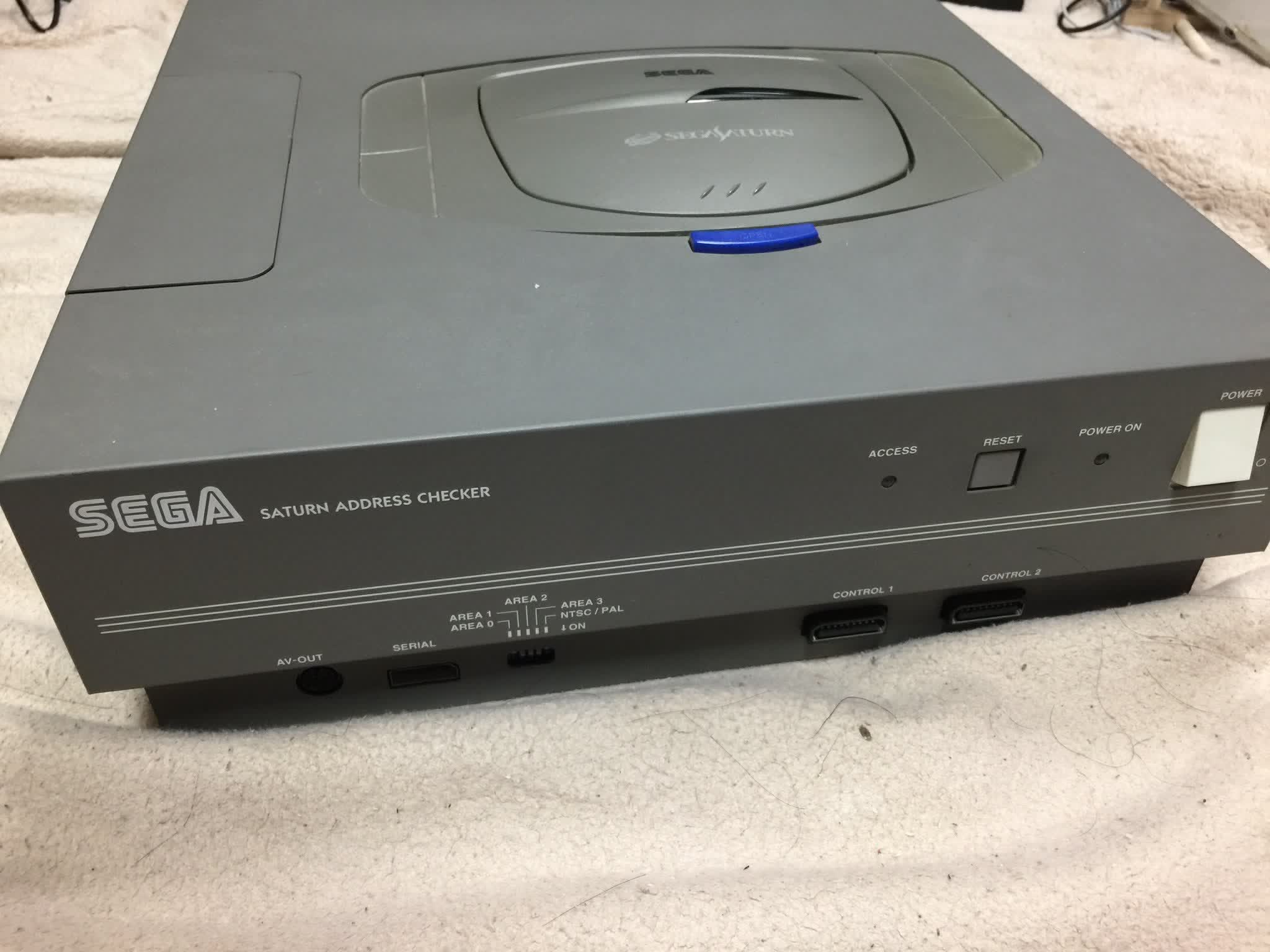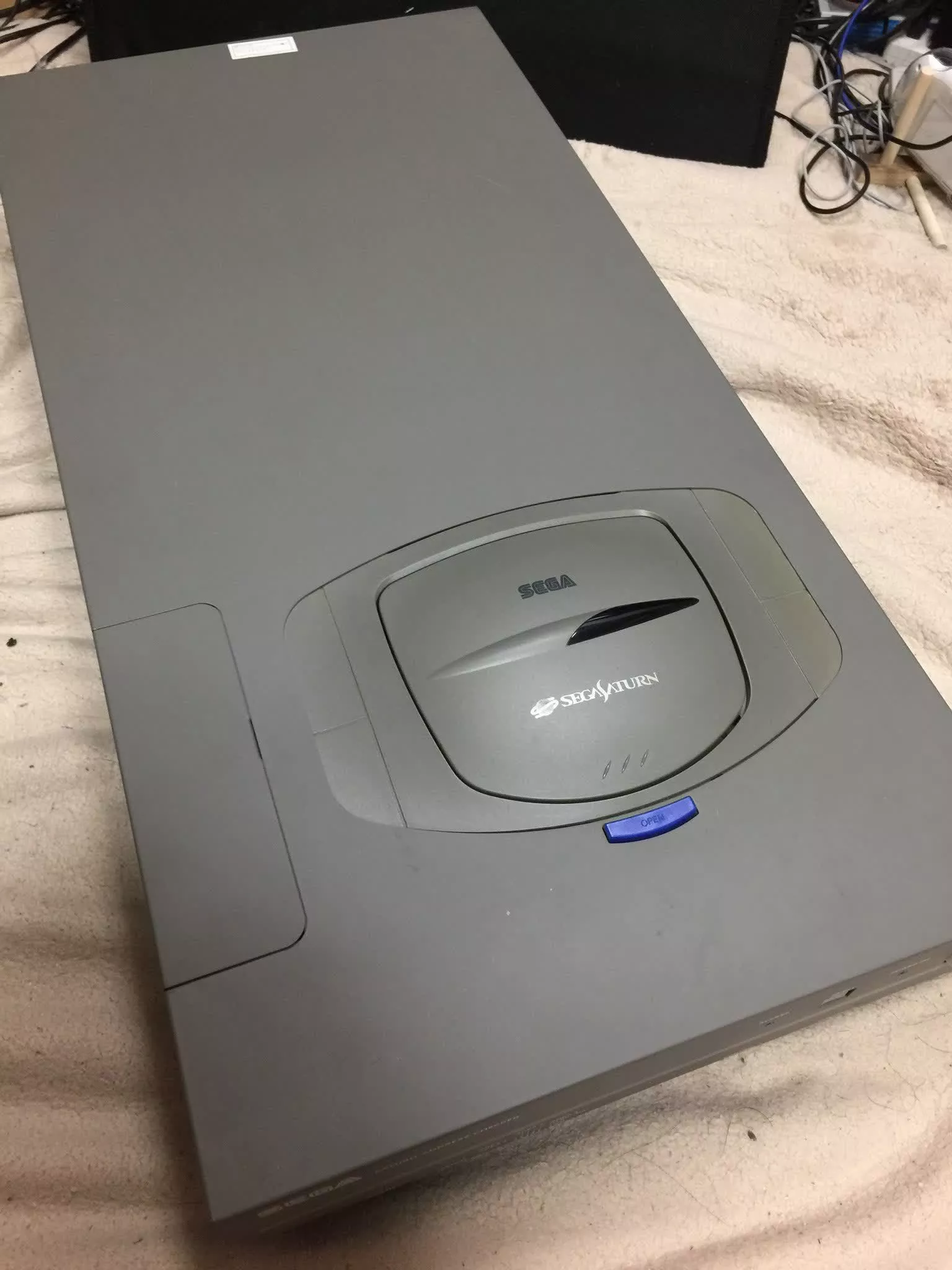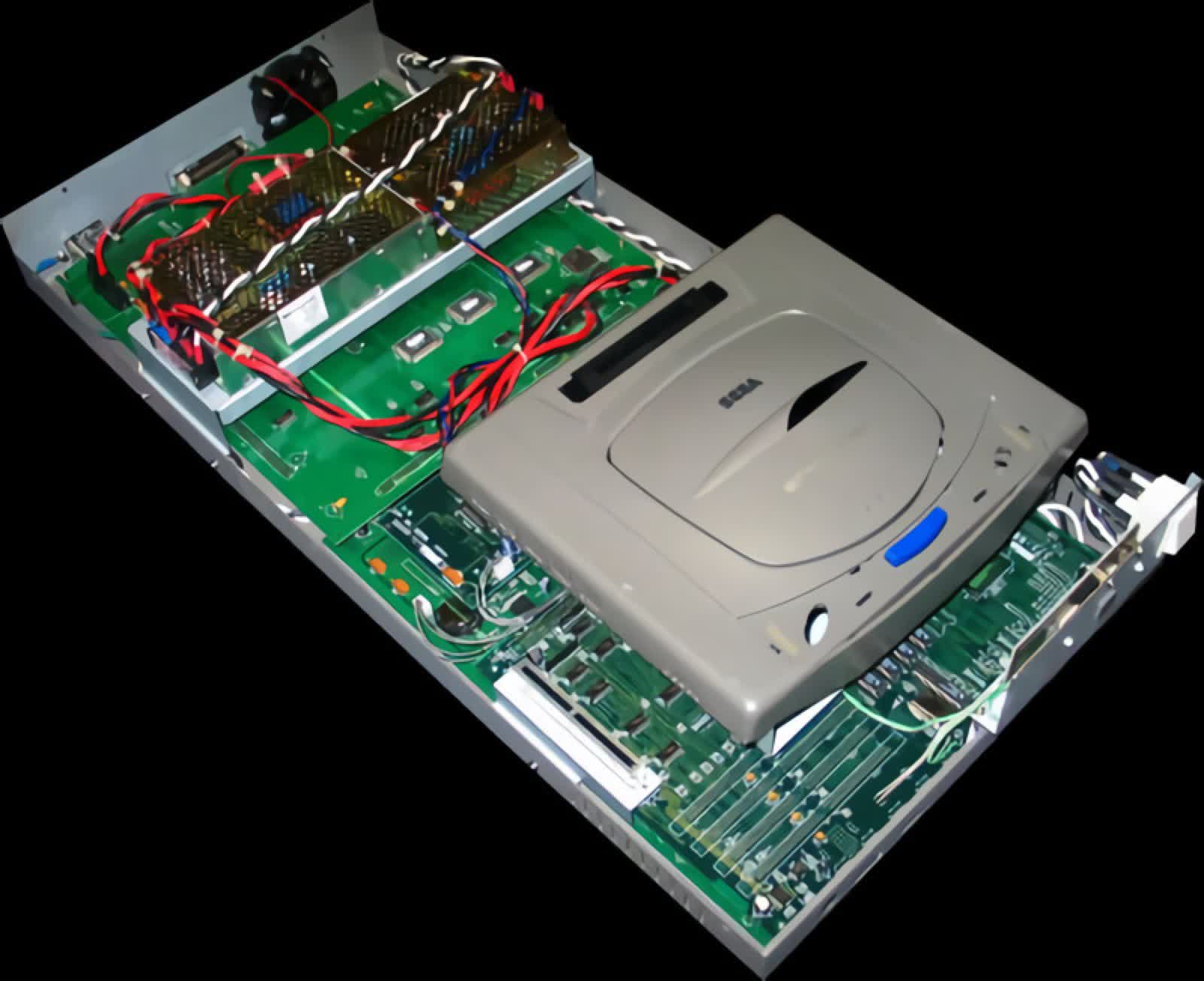Vintage tech: The Sega Saturn launched in November of 1994. As with almost all gaming consoles, game makers were given access to developer kits (dev kits). One of the first dev kits for the Saturn was called the Address Checker, and it was enormous compared to commercial units.

A Japanese collector of vintage video game hardware and anime paraphernalia tweeted a couple of pictures showing off his Sega Saturn Address Checker. The dev kit was used to ensure games did not break any of Sega's memory usage rules.

The collector, who goes by Ranma on Twitter, says the unit is worth about one million yen ($9,650). Ranma did not share too much information about the dev kit or where he got it. He claims to be a former Sega Saturn developer, so it might be one he held on to for all these years.
The most notable feature of the Address Checker is its length—it is about three-feet long. To give it some perspective, here is a Sega Saturn sitting inside an Address Checker chassis (below). Later versions of the dev kit were not much bigger than a standard Sega Saturn.

If you are interested in the more technical details, the Operation Manual is posted online.
Found is a TechSpot feature where we share clever, funny or otherwise interesting stuff from around the web.
Image credit: SSAC by Ranma, Comparison by NFG
https://www.techspot.com/news/88421-first-sega-saturn-devkits-apparently-super-long.html